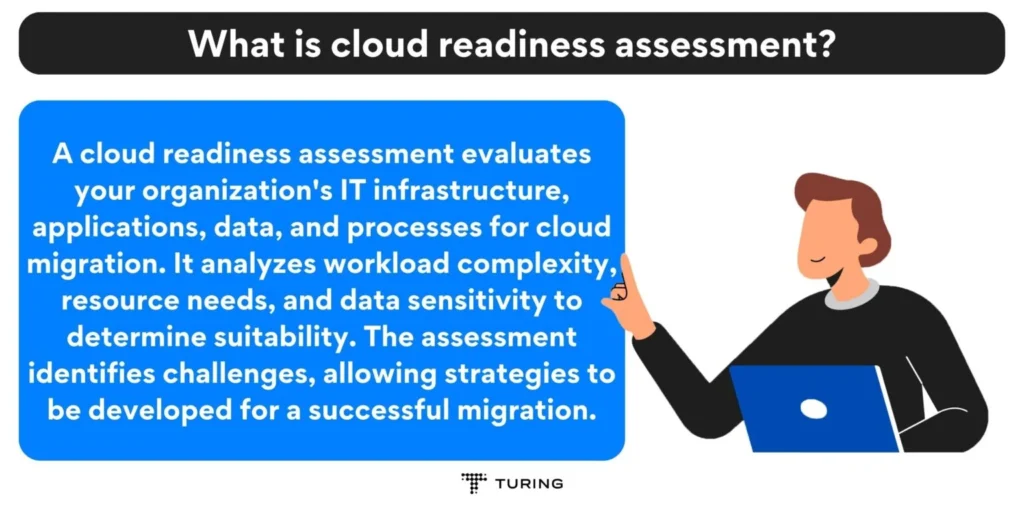
Figure 1: banner
Digital transformation has become a critical strategy for companies aiming to stay competitive and relevant. It involves the integration of digital technologies to revolutionize operations, enhance customer experiences, and drive innovation. One of the most powerful enablers of digital transformation is Cloud Managed Services. This article will explore how Cloud Managed Services can propel your business forward by providing enhanced agility, scalability, and data security, ultimately leading to sustainable growth and success.
Contents
Understanding Digital Transformation and Its Impact
Digital transformation refers to a fundamental shift in an organization’s mindset and processes, leveraging cutting-edge technologies to drive growth and innovation. By embracing digital transformation, businesses can streamline operations, optimize internal processes, and deliver better customer experiences.
For example, consider a traditional brick-and-mortar retailer undergoing a digital transformation. By embracing cloud-based e-commerce solutions, they can expand their reach, offer personalized recommendations to customers, and provide a seamless shopping experience across online and offline channels.
The Power of Cloud-Managed Services
Cloud Managed Services involve outsourcing the management, monitoring, and optimization of cloud infrastructure and services to a specialized third-party provider. It offers several advantages, including:
- Reduced IT Maintenance Burden: With an MSP managing cloud infrastructure, your IT team can focus on strategic initiatives and core business functions rather than routine maintenance tasks.
- faster Time-to-Market: Cloud Managed Services enable rapid deployment of applications and services, accelerating time-to-market for new products and features.
- Enhanced Collaboration: Cloud-based tools and services foster collaboration, promoting seamless information sharing and efficient teamwork.
An excellent example of the power of Cloud Managed Services is Netflix. By leveraging cloud infrastructure, Netflix delivers streaming services to millions of users globally, allowing them to scale up or down based on demand, providing an uninterrupted entertainment experience.
Evaluating Your Cloud Readiness
Before migrating to the cloud and availing of Managed Services, businesses must assess their cloud readiness. Some key considerations include:
- Current IT Infrastructure: Evaluate your existing infrastructure to identify which applications and processes can be migrated to the cloud and which require modifications.
- Business Needs: Determine your specific business requirements, such as scalability, data storage, and security, to choose the most suitable cloud services.
- Risk Assessment: Identify potential challenges and risks associated with cloud migration, such as data breaches, service interruptions, or compliance issues, and create mitigation plans.

Figure 2: Cloud readiness assessment
Image source: turing.com
Selecting the Right Cloud Managed Service Provider (MSP)
Choosing the right MSP is crucial for a successful digital transformation journey. Consider the following factors when selecting an MSP:
- Experience and Expertise: Look for an MSP with a proven track record in managing cloud infrastructure and services, ideally with experience in your industry.
- Security Protocols: Ensure the MSP follows robust security practices, including data encryption, access controls, and regular security audits.
- Compliance Standards: If your business operates in a regulated industry, verify that the MSP complies with relevant industry standards and regulations.
A prime example of a successful partnership with an MSP is Centroid. Centroid Systems Inc., a prominent company specializing in cloud consulting and managed services for application and database workloads, has partnered strategically with Oracle, a renowned tech giant, as a Cloud Managed Service Provider (MSP). This partnership aims to bolster their commitment to investing in and expanding the utilization of Oracle Cloud Infrastructure (OCI).
Crafting a Cloud Migration Strategy
A well-planned cloud migration strategy is essential for a seamless transition. Follow these steps:
- Data Assessment: Identify and categorize your data based on sensitivity and importance, ensuring proper data migration and storage.
- Application Compatibility Checks: Analyze your applications’ compatibility with the cloud environment and make necessary adjustments or seek alternatives.
- Realistic Timelines: Set achievable timelines for migration to avoid disruptions to your business operations.
Ensuring Data Security and Compliance
Data security is a top priority when embracing cloud services. An MSP should implement robust security measures:
- Encryption: Data encryption ensures that sensitive information remains secure, even if a security breach exists.
- Access Controls: Restrict access to data and resources based on user roles and permissions to prevent unauthorized access.
- Regular Audits: Conduct security audits to identify and address potential vulnerabilities.
A notable example of stringent data security is Salesforce. They invest heavily in data protection measures to ensure their customers’ sensitive information remains safe and compliant with data privacy regulations.
Conclusion
Digital transformation is no longer an option; it’s a necessity for businesses to thrive in today’s dynamic market. Cloud Managed Services drive successful digital transformations, offering enhanced agility, scalability, and data security. By selecting the right MSP, crafting a well-thought-out migration strategy, and embracing cloud technologies, businesses can propel themselves into the future with increased efficiency and innovation.
STL offers Cloud Managed Services that work across different domains and vendors. Their main goal is to make operations more cost-effective, improve processes, and enhance service levels in network engineering, network fulfilment, and assurance. Embrace cloud-managed services today, and unlock the full potential of your digital transformation journey.
Cloud-based collaboration tools enhance teamwork regardless of location through seamless communication with video conferencing and messaging apps. Customer engagement is improved with cloud services across various channels, while remote work flexibility boosts productivity by enabling access and sharing of documents and resources from anywhere.
Cloud Managed Services deliver cost savings through:
a. Eliminating extensive hardware investments, reducing hardware costs significantly.
b. 1. How do cloud-based collaboration tools enhance collaboration and communication among teams? Cloud-based collaboration tools enhance teamwork regardless of location through seamless communication with video conferencing and messaging apps. Customer engagement is improved with cloud services across various channels, while remote work flexibility boosts productivity by enabling access and sharing of documents and resources from anywhere.
2. How do Cloud Managed Services contribute to cost optimization compared to traditional on-premises infrastructure? Cloud Managed Services deliver cost savings through:
a. Eliminating extensive hardware investments, reducing hardware costs significantly.
b. Optimizing resource usage, ensuring payment for necessary resources, and minimizing expenses.
c. Offering scalable costs with pay-as-you-go pricing models, providing cost predictability and control.
Managed services play a pivotal role in contemporary digital transformation. They offer specialized expertise, seamless integration, and on-demand scalability for businesses adopting new technologies. By outsourcing tasks like cloud management, cybersecurity, and IT support, companies can focus on core functions, accelerate innovation, and swiftly adapt to changing market needs. Managed services enhance operational efficiency, reduce downtime, and ensure regulatory compliance. This enables businesses to harness modern tech capabilities, remain competitive, and navigate the evolving digital landscape effectively.
Pinterest serves as an exemplary case. Through their migration to the cloud and effective utilization of Managed Services, they have streamlined cost management, enabling a more efficient allocation of resources.
















